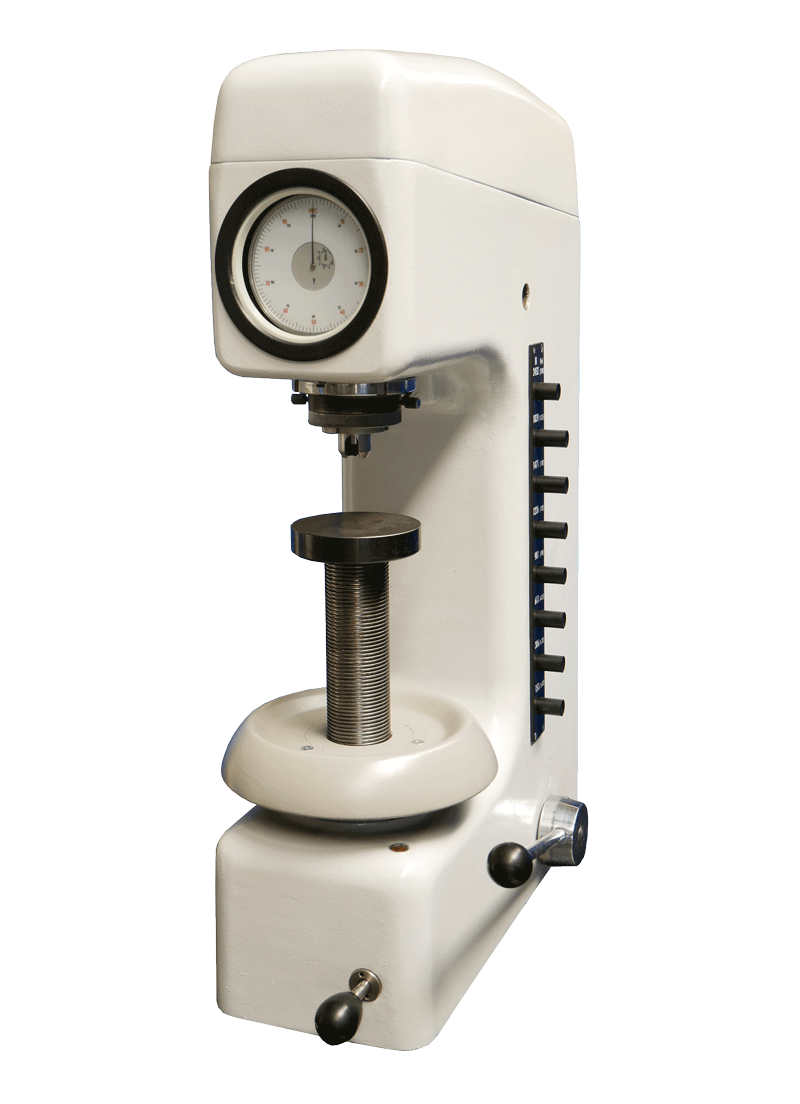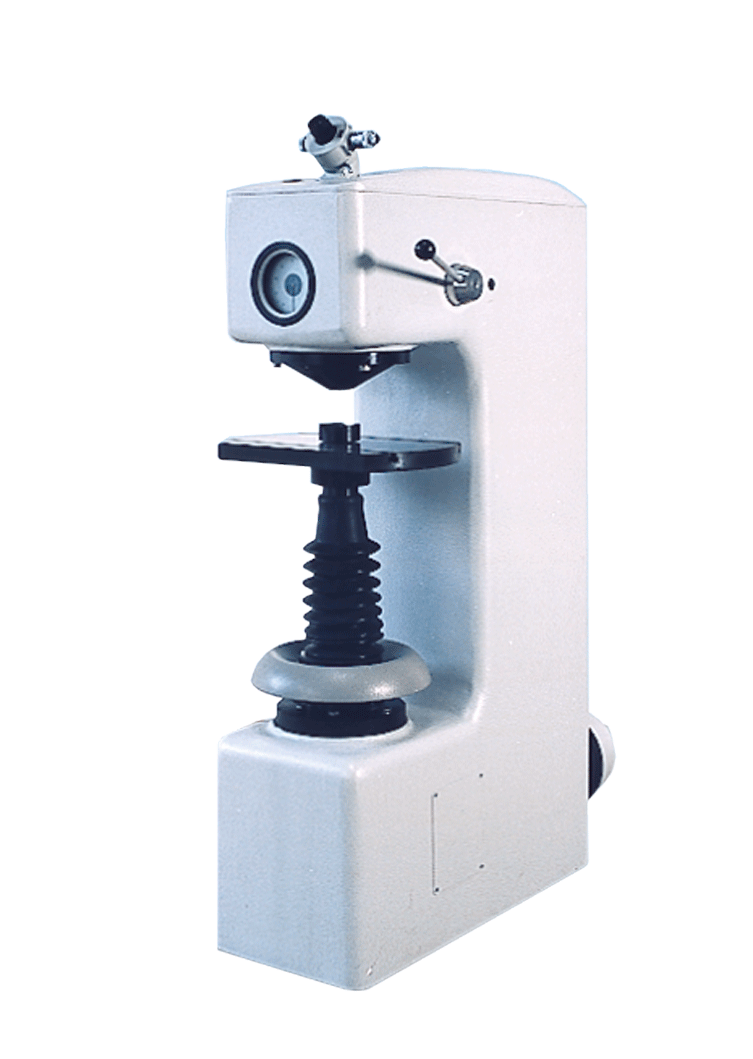Hardness Testers
The hardness testers of WPM are used to determine the hardness of all kind of metal based of Brinell, Vickers and Rockwell.
The hardness testers of WPM are used to determine the hardness of all kind of metal based of Brinell, Vickers and Rockwell.
Our hardness testers serve to determine the hardness of steel and metals of all types based on Brinell, Vickers und Rockwell. Mainly, they can be applied with cast iron, untempered steel and light metal.
We can also offer hardness reference plates and calibration for your hardness tester.

The HP 250 hardness tester is used to measure the Rockwell hardness of metallic materials according to ISO 6508-1. Due to its completely closed design, the device is protected against dust, so that it not only meets the needs of laboratories, but also the requirements of workshops and hardening shops.
A handwheel is mounted on ball bearings on the lower part of the frame and a spindle is screwed into its central bore. A test table is attached to the upper end of the spindle. Turning the handwheel raises or lowers the spindle with the test table.
The force levels are selected by the push buttons on the right side.
The hardness values can be read directly on the scales of the dial gauge. The dial of the dial gauge is indirectly illuminated.

HPO 3000
The HPO series hardness testers are designed for Brinell hardness tests in accordance with ISO 6506-1. Vickers tests according to ISO 6507-1 are also possible with the HPO 250 hardness tester, which is designed as a table-top device. Tests up to 250 kp (2452 N) can be carried out with the hardness tester HPO 250, the hardness tester HPO 3000 reaches up to 3000 kp (29420 N). The HPO 3000 hardness tester is a standalone device and is used to test forged and cast parts, shafts, bolts and is particularly suitable for examining coarse-structured materials. A built-in indentation depth gauge allows both the observation of the flow process in the material to be tested and a quick sorting of large quantities of workpieces with approximately the same hardness according to specific tolerances.
In the Brinell hardness test, a ball of diameter D is pressed into the specimen with a force F and the diameter d of the indentation left is measured (evaluation using a measuring microscope or a suitable measuring magnifier). The process is preferably used for cast iron, unhardened steel and light metal up to a Brinell hardness of 450 HBW or 300 HBS.
A diamond indenter in the shape of a right pyramid with a square base is pressed into the surface of a specimen and the diagonals d1 and d2 of the indentation left in the surface after the test force F is removed are measured. The method is suitable for testing all metals as long as their impression is visible in the optical projection device and can thus be measured. The test forces are between 49.03 N and 1177 N. For these test forces, the hardness value is independent of the test force. The Vickers hardness test is particularly suitable for small, hard and thin test specimens and for determining the hardness of case and nitrided layers.
In the Rockwell hardness test, the indenter (diamond cone for the HRA, HRC and HRN methods, or steel ball for the HRB, HRF and HRT methods) is pressed into the surface in two stages and the permanent penetration depth of this indenter is measured.